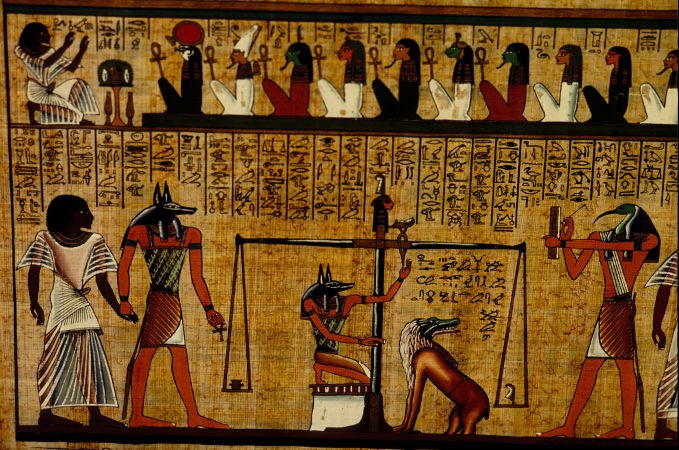
Ancient Egyptian religion consisted of the beliefs and practices that were performed by the Egyptians in Ancient Egypt. The religious belief of the Egyptians was extremely relevant and influenced people's lives considerably. Because they were polytheists, the ancient Egyptians believed in several gods.
Two very important characteristics of the religiosity of the Egyptians were the concepts maat and heka . The first concept defined the importance of living a righteous life in order to maintain harmonious existence in the universe. The concept of Heka it was related to magic and affirmed its importance in both the creation of the universe and the manifestation of the power of the gods.
The gods of the Egyptian pantheon were represented in three different ways:
-
Anthropomorphic :human form.
-
Zoomorphic :animal form.
-
Anthropozoomorphic :human and animal form at the same time.
Among the main Egyptian gods, Horus , Ra (sun god), Isis (goddess of fertility), Anubis (god of the dead), Maat (goddess of justice) and Bastet (goddess of cats and fertility). Each god played a different role, as well as having specific priests responsible for their worship.
Priests in Ancient Egypt could be either male or female. In general, priestesses worshiped a goddess, and priests a god, however, this was not a mandatory rule. The priests of Egypt faced a long process of training and could raise families like anyone else.
These religious were responsible for the worship of the gods and the upkeep of the temple, as well as the holding of religious festivals. Priests also played a role with the local community, performing funerals, weddings and playing the role of healers. Worship of the gods in the temples was restricted to them.
Belief in the afterlife and mummification
A central element in the religion of the Egyptians was the belief in the continuity of life after death. The Egyptians believed that earthly life was just one stage of a journey that would continue and that, therefore, it would be necessary to take it as fair as possible. The acts performed in life were even extremely important, as they would define the destiny of each person.
According to this religion, each person who died would have his actions judged in a court presided over by Osiris, one of the main Egyptian gods. Egyptian belief stated that the heart would be weighed in a scale with a feather , and the result would define access to paradise.
This was a symbolic act, since the heart represented each person's actions in life, and the feather represented justice and was the symbol of the goddess Maat. If the heart were lighter than the feather, the person would have access to paradise. Otherwise, that person's soul would be devoured by a monstrous entity.
The belief in life after death also explained the concern of the Egyptians with the conservation of bodies, since the continuity of life was conditioned to its preservation on earth. From this point of view, it was necessary for the bodies to be taken care of, so the Egyptians mummified their dead.
Mummification was carried out in a long process that took approximately 70 days. The best-known process was restricted only to the Egyptian nobility, the only ones who were financially able to pay for it. During mummification, first, the organs were removed, and the body was cleaned and bathed with special oils and resins, and then bandaged. In the tomb, food and a series of objects such as jewelry and statues were placed.
Take the opportunity to check out our video lessons on the subject:
